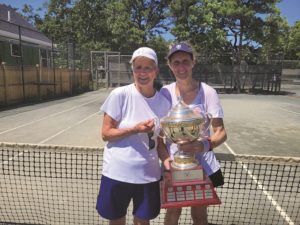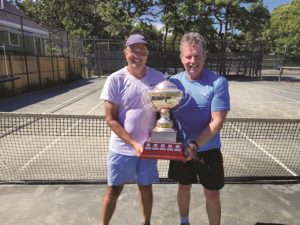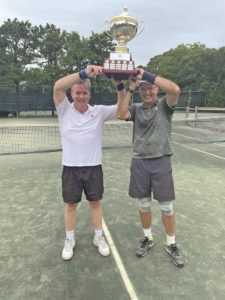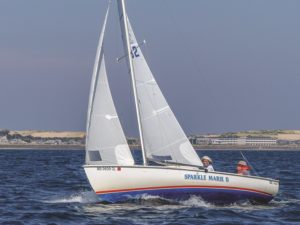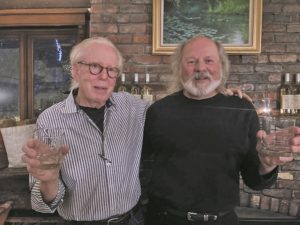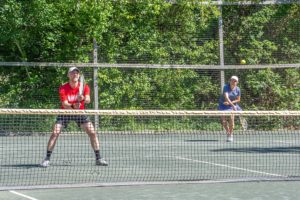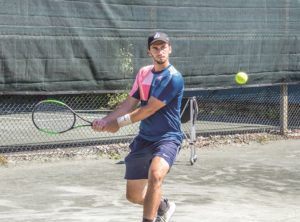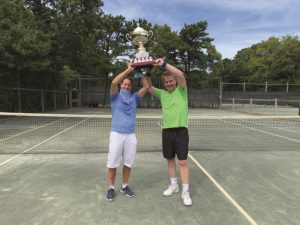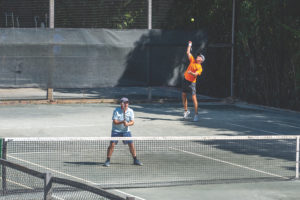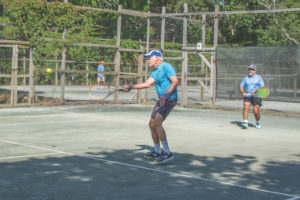PROVINCETOWN — With its reggae clam dances and its groovy homemade posters by the likes of comic artist Al Jaffee, the Provincetown Tennis Club has long had a reputation as an East End institution that’s more artistically inclined than most places that cater to the sport’s devotees.
It also might or might not be exactly 100 years old. But the club is celebrating its 100-year anniversary this summer anyway.
The club’s predecessor, the Tennis Club of Provincetown, was founded in 1924.
That first club had Charles Hawthorne, the artist who started the Cape Cod School of Art, as one of three founding members. It offered special membership discounts to art students with recommendations from their schools, according to an article in the Provincetown Advocate published in July 1931.
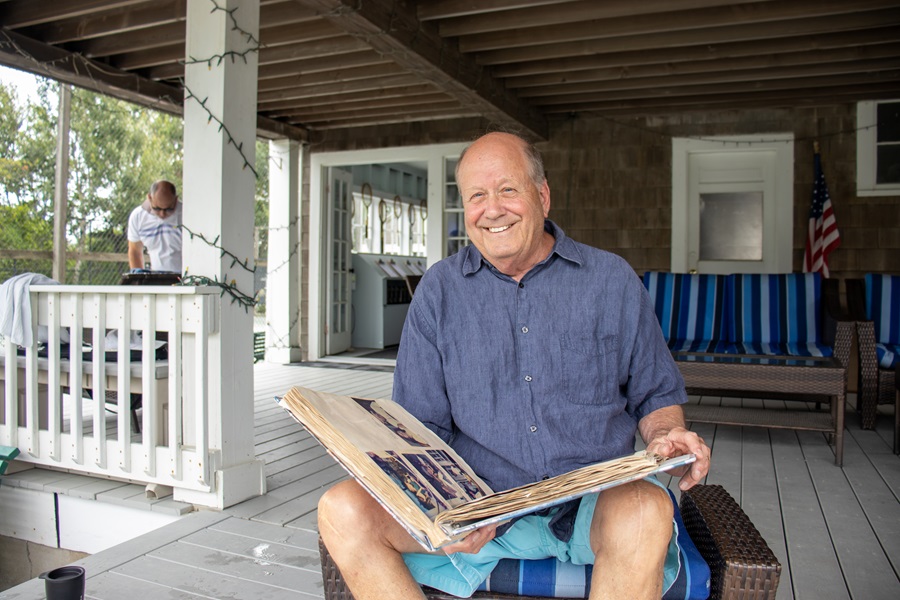
Family films preserved on videotape at the Library of Congress feature Hawthorne playing tennis at the club, according to Julie Gray, the Provincetown Tennis Club’s current president.
Hawthorne’s club makes the 100th anniversary idea slightly complicated, according to David W. Dunlap, author of the Provincetown Encyclopedia, because it was a different entity than the one that exists today.
The current club was founded as the East End Club in 1939, when the property was sold to illustrator Lauren Cook amid the Great Depression. And for a while, starting in 1946 when it came into a right-of-way connecting the clubhouse to the harbor, the club was the Provincetown Yacht and Tennis Club.
Despite these discontinuities, a tennis club has existed in one form or another at 288 Bradford St. for a century. And for Annette Andruss, who joined in 2015 and is a member of the club’s board of governors, that’s what’s important. “We’re counting the whole thing,” she says.
The club has long been member-owned, according to Andruss, though she says they are working on becoming a nonprofit organization.
The composition of the initial club’s board, which besides Hawthorne and other artists also included a Pittsburgh pediatrician and the president of the Cambridgeport Savings Bank, aligned with the geographical demographics of Provincetown at the time, according to local historian Lisa King. The East End, where the club is situated, was populated by wealthier summer residents and artists, while the West End was home to the Portuguese community.
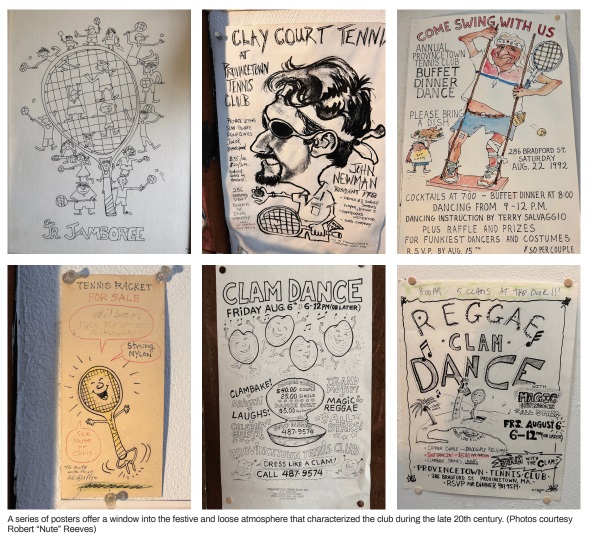
Over the years, the range of its membership, which included Jaffee, artist Frank Milby, and businessman and art collector William Brill among others, characterized the club as it did the population of the town itself. Some members were wealthy, but the only “echelon” that existed was related to tennis ability, not money, according to Linda Shea, who was a member for some 30 years beginning in the early 1980s. “It was the kind of wealthy people who had holes in their shirts,” she says.
“I suspect our passion for tennis was not just about tennis but the atmosphere and the wide range of people we got to meet who were interested in us as kids,” says Lise Motherwell, who started taking lessons at the club in 1960 when she was five. Her father and stepmother, the artists Robert Motherwell and Helen Frankenthaler, also played at the club.
The clubhouse represented a supervisory gray area for children at the time, according to Motherwell. “It was definitely a sanctuary for teenagers,” she says. “There were adults around, but they weren’t necessarily our parents.”
The roving children were just another addition to the eclectic and intergenerational mix of the club’s membership of that time. By all accounts, 288 Bradford St. was old, young, gay, straight, artists, and business types, all together in one place. The culture was loose and inclusive, mostly composed of seasonal residents. Tennis whites were not required, and artists played in paint-splattered clothes.
With around 130 full-time members and with monthly and weekly memberships and guests, the club is still a busy place. In fact, membership is currently capped because the club’s two synthetic grass courts and five clay courts are at capacity.
Looking to the future, Andruss says, the club wants to tap its past as a haven for young people. She’s hoping for a return of the “Junior Jamboree,” a weekly afternoon program that provided rackets, instruction, and food for kids.
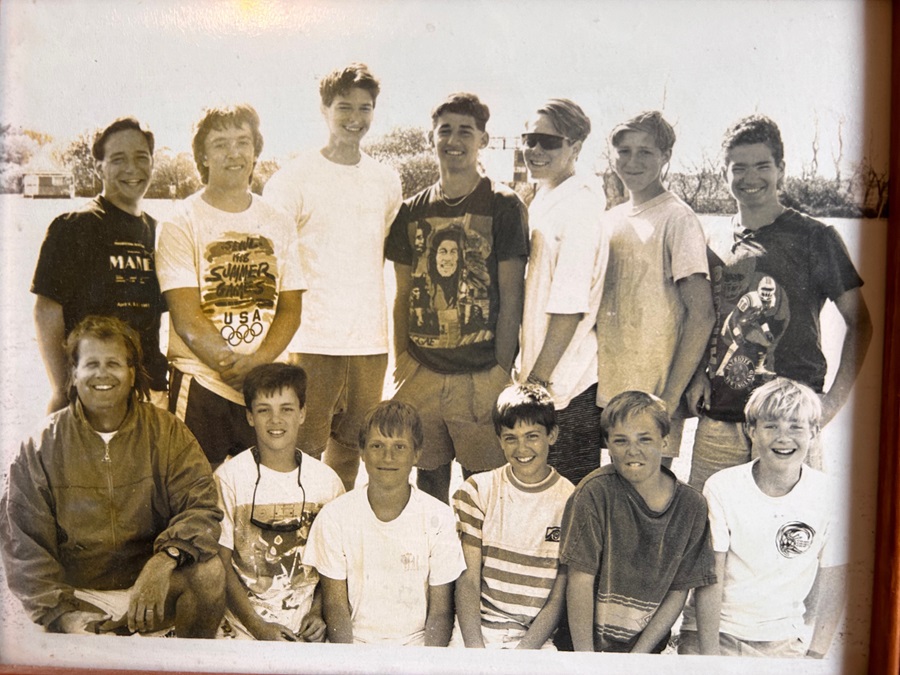
Another goal is to renovate the clubhouse, which is older than the club itself. In the process, the hope is to create housing for a pro who runs lessons and clinics. A task that is always a scramble has gotten harder each year, says Andruss. Solving that problem will mean one big change in the clubhouse setup: once the DNA Gallery’s lease is up next summer, the organization is looking to convert the upstairs space that has long been the realm of artists into a place where a pro could live.
The club will hold its centennial celebration on Saturday, Aug. 24 at the Provincetown Monument. Tickets are required, and there will be a silent auction to raise funds to support programs and the renovation.
Some things, like the clay courts’ lack of drainage and the family feeling of the tennis community, have endured, Andruss says. As for the tennis itself, the sport seems to have been played here in as many ways as its multifaceted membership has been able.
Josh Bloom, who has gone to the club almost continuously for five decades, remembers hitting with Brill, who played on prosthetic feet while smoking a pipe. “He never got to a ball, but if he did the point was over because he always hit great shots,” he said.
There were plenty of parties and potlucks, says Robert “Nute” Reeves, the club’s manager from 1977 to 2000. But for years the club held a tournament for year-rounders that ended with July 4th finals that were taken quite seriously.
“You felt like you were in Roland-Garros” says Linda Shea, who was a member of the club from the early ’80s until roughly 2010 and won the tournament multiple times. “It seemed that important.”
Tennis is still the name of the game at the club. Jenny Byrne, the current director of tennis and resident pro, was ranked as one of the world’s 50 best singles players during her career, Andruss says. And in a recent survey, members voted down the idea of converting the club’s two synthetic grass courts into four pickleball courts.
Editor’s note: An earlier version of this article, published in print on July 25, incorrectly reported the name of the current president of the tennis club. It is Julie, not Nancy, Gray. And the correct dates of Robert “Nute” Reeves’s tenure as manager are 1977 to 2000, not 2001.
